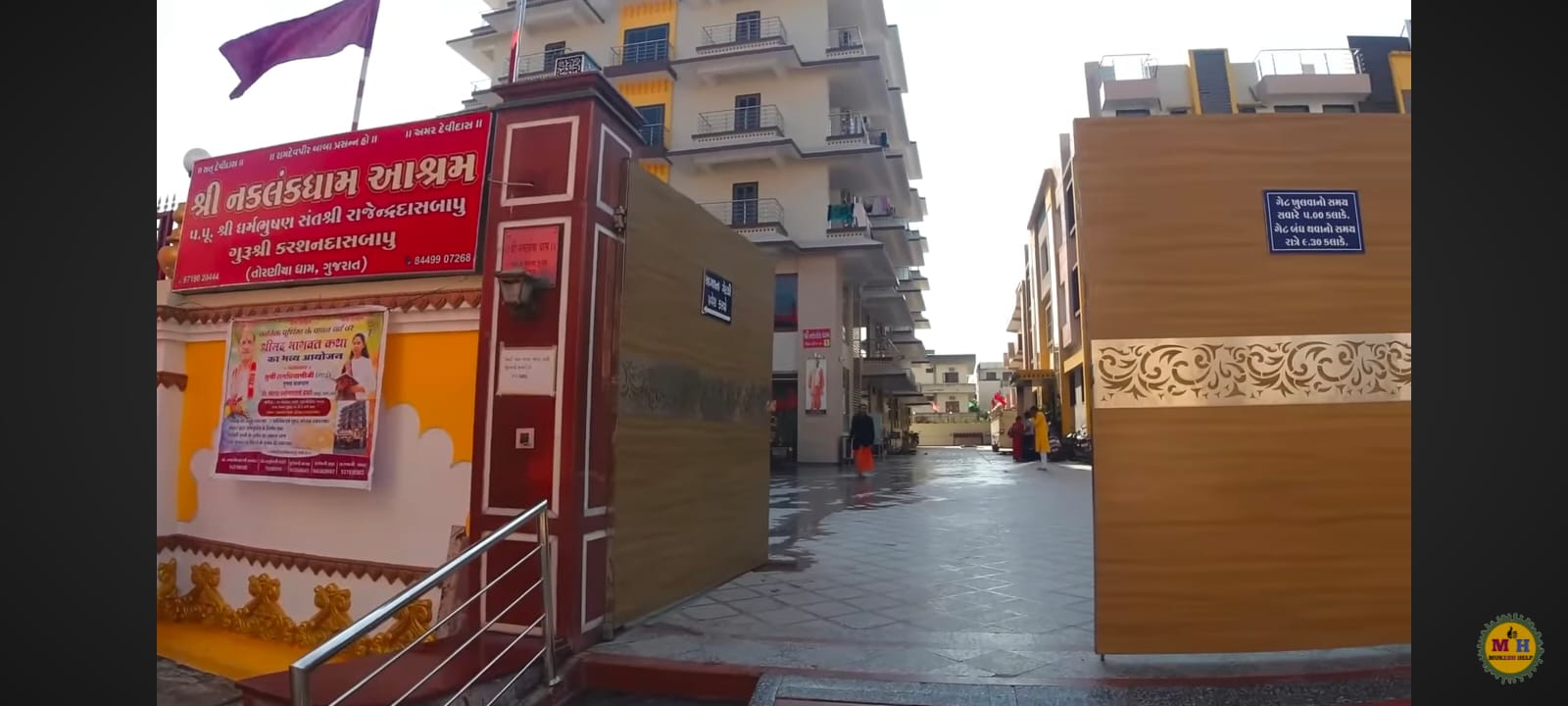
#CapitalGainsTax #IncomeTaxIndia #ITRFiling #CondonationRequest #PropertySale #MissedTax #IndianLaw #TaxCompliance #CABlog
1. प्रस्तावना (Introduction)
सम्पत्ति बेचने पर पूंजीगत लाभ कर भारत में एक महत्वपूर्ण कर है, जिसे सही समय पर चुकाना करदाता की जिम्मेदारी होती है। पर यदि कोई व्यक्ति 8 वर्ष पूर्व अपनी संपत्ति की बिक्री पर पूंजीगत लाभ कर देना भूल गया है तो आज की तारीख़ में, क्या अब वह अपनी गलती सुधार सकता है? क्या कानून में अब भी ऐसा कोई रास्ता बचेगा? इस लेख में हम चार्टर्ड अकाउंटेंट्स (सीए), टैक्स कंसल्टेंट्स और विशेषज्ञों की सलाह के साथ जानेंगे कि आपकी स्थिति में क्या किया जा सकता है।
2. पूंजीगत लाभ कर की मूल बातें
2.1 पूंजीगत लाभ का अर्थ
-
जब आप कोई संपत्ति, जैसे – ज़मीन, मकान, फ्लैट, शेयर आदि बेचते हैं और बिक्री मूल्य आपकी खरीद कीमत से अधिक होता है तो जो ‘लाभ’ होता है, उसे ‘Capital Gain’ कहते हैं।
-
इसी लाभ पर आयकर कानून के अनुसार Capital Gain Tax देना जरूरी है – जो Long-term या Short-term हो सकता है।
-
संपत्ति पर अक्सर यह Long-term Capital Gain माना जाता है, अगर 24/36 महीने से अधिक होल्ड किया गया हो।
2.2 रिपोर्टिंग जरूरी क्यों?
-
आयकर कानून के अनुसार, पूंजीगत लाभ को हर साल इनकम टैक्स रिटर्न (ITR) में दिखाना और उसका टैक्स चुकाना अनिवार्य है।
-
यदि गलती से पूंजीगत लाभ छूट गया या गलती से शामिल नहीं हुआ, तो सरकर आपके डेटा को Annual Information Statement (AIS) इत्यादि माध्यमों से ट्रैक कर सकती है।
3. पुरानी गलतियों की सुधार नीति: नियम और कानून
3.1 पहले क्या होता था?
-
पुराने नियमों के अनुसार, ITR रिटर्न की भूल को उसी असेसमेंट वर्ष की तय तारीखों के अंदर ही सुधारा जा सकता था (Section 139(5): Revised Return)।
-
देर से फाइल करने पर Belated Return (Section 139(4)) भी संभव था, पर इसकी भी समयसीमा कड़ी थी।
3.2 ITR-U की शुरुआत (Section 139(8A))
-
अब भारत सरकार ने ITR-U (Updated Return) की व्यवस्था शुरू की है, जिसमें 2/4 साल की छूट मिलती है – पर 8 साल पुराने मामलों में भी यह ऑप्शन नहीं बचता।
-
ITR-U फॉर्म का लाभ सिर्फ उस असेसमेंट ईयर की समाप्ति के चार साल तक ही लिया जा सकता है।
3.3 विलंब की क्षमा (Condonation of Delay – Section 119(2)(b))
-
यदि कोई रिटर्न बहुत पुराने वर्ष (जैसे 8 वर्ष पहले) का है, जिसमें न तो Revised Return, Belated Return और न ITR-U फॉर्म, कुछ भी नहीं हो सकता – तब “Condonation Application” ही एकमात्र उपाय है।
-
Central Board of Direct Taxes (CBDT) के द्वारा इस प्रक्रिया को नियंत्रित किया गया है, जहां करदाता ‘गंभीर कारणों’ के साथ स्पष्टीकरण दे सकते हैं।
4. Condonation Request क्या है?
-
आयकर विभाग के पास सुपुर्द की गई एक विशेष ‘क्षमा’ (Condonation) एप्लीकेशन होती है, जिसमें आप अपनी Genuine Hardship (असली/ईमानदार वजह) का उल्लेख करते हैं कि क्यों टैक्स देना छूट गया।
-
यदि विभाग को लगता है कि आपकी परिस्थिति वाकई मजबूरीजन्य (hardship) है और गलती जानबूझकर नहीं की गई, तो अधिकारी आपको रिटर्न फाइल करने की अनुमति दे सकते हैं।
4.1 मौजूदा समय-सीमा
-
अक्टूबर 2024 से नए नियम के अनुसार, करदाता अपनी ‘कंडोनेशन’ अर्जी अंतिम डेट से 5 साल के अंदर ही दे सकते हैं। 8 साल पुराने रिटर्न के लिए अपवाद उन्हीं मामलों में मिल सकता है, जहां अदालत/कोर्ट का केस लंबा चला हो।
-
बड़ी राशि (₹1 करोड़, ₹3 करोड़, उससे ऊपर) के मामलों में किस अधिकारी को आवेदन भेजना है, उसके लिए भी स्पष्ट दिशा-निर्देश हैं।
4.2 आवेदन की प्रक्रिया
-
ई-फाइलिंग पोर्टल पर लॉगिन करें।
-
“Services” टैब के अंतर्गत “Condonation Request” को चुनें।
-
आवेदन के साथ सारे आवश्यक दस्तावेज संलग्न करें—जैसे बिक्री का समझौता, खरीद रसीद आदि।
-
Genuine Hardship का ब्यौरा दें: जैसे लंबी बीमारी, परिवारजन की मृत्यु आदि।
-
विभाग से विधिवत अनुमति मिलने के बाद ही delayed ITR फाइल की जा सकती है।
5. विशेषज्ञों (CA) की राय एवं सुझाव
5.1 टैक्स प्रोफेशनल्स और सीए की मुख्य सलाह
-
पुरानी आय में कोई गलती छूट गई हो तो सबसे पहले दस्तावेजों की जांच करें, AIS/26AS रिपोर्ट को मिलाएं।
-
अगर ITR-U की समयसीमा निकल गई है (4 साल), तो कंडोनेशन के लिए क्लीयर और सच्ची वजह जरूर बताएं।
-
रिटर्न दाखिल करते समय सभी पूंजीगत लाभ, खर्च, छूट, और ब्याज की सही गिनती और डिटेल्स दें।
-
कोशिश करें कि भविष्य में आईएस/26AS को हमेशा मिलाते रहें और हरेक वित्तीय साल में रियल टाइम में टैक्स रिपोर्टिंग करें।
-
कंडोनेशन मिलने तक किसी चार्टर्ड अकाउंटेंट की सहायता लें, जिससे तकनीकी चूक और डॉक्युमेंटेशन में कोई कमी न रह जाए।
-
आयकर विभाग आपसे पूछताछ या नौटिस भेज सकता है, वहां स्पष्ट और ईमानदार जवाब दें।
5.2 ध्यान देने योग्य मुख्य बातें
-
कंडोनेशन सिर्फ उन्हीं मामलों में मिलेगी, जिन्हें “गंभीर मजबूरी” (genuine hardship) के तहत विभाग स्वीकार करता है।
-
इस प्रक्रिया में विभाग का निर्णय अंतिम होता है—मंजूरी या अस्वीकार दोनों के लिए तैयार रहें।
-
विलंब में शास्ति (interest/penalty) लग सकती है, पर कंडोनेशन मंजूर होने पर ब्याज/पेनाल्टी कम या माफ भी हो सकती है।
6. विस्तृत स्टेप-बाय-स्टेप प्रक्रिया (Step-by-Step Procedure Hindi)
दस्तावेज़ एवं लीगल जांच:
-
- अपनी बिक्री, खरीद, सुधार के खर्च के सारे दस्तावेज इकट्ठा करें।
ITR Portal लॉगिन:incometax.gov.in
-
- पर लॉगिन करें, अपनी प्रोफाइल सत्यापित करें।
Condonation for Delay Application:
-
- Services Section में “Condonation Request” चुनें।Assessment year, कारण और supporting documents अपलोड करें।
Genuine Hardship लिखें:
-
- जीवन की वो कठिनाई बताएं जिससे टैक्स समय पर न भर पाने की मजबूरी बनी।Eg — बड़ी बीमारी, विदेश में लंबा प्रवास, दुर्घटना।
CA/Expert से फाइलिंग कराएं:
-
- रस्मी जाँच, डिटेलिंग व टैलींग के लिए सीए की सलाह लें।
Tax कैलकुलेशन:
-
- पूंजीगत लाभ, छूट, ब्याज आदि का पूरा हिसाब लगाएं।
Income Tax Officer से विमर्श:
-
- कभी-कभी आवेदन के बाद इनकम टैक्स अधिकारी दस्तावेज़/कारण की पुष्टि चाहते हैं।
Authority की स्वीकृति मिलने पर:
-
- स्वीकृति मिलते ही ड्यू ITR फाइल करें, टैक्स, ब्याज व शास्ति चुकाएं।
वेरिफिकेशन और साफ़ रिपोर्टिंग:
-
- E-Verification के बाद acknowledgment जरूर सेव करें।
7. ट्रेंड्स व हाल के बदलाव (Recent Rules & Trends)
-
-
-
अक्टूबर 2024 से पांच वर्ष की समय सीमा बंदिश लागू।
-
अब.AUTHORITY का फैसला 6 माह के भीतर करना जरूरी है, जिससे मामले लंबा न खिंचे।
-
कोट/ज्यूडिशियल ऑर्डर की स्थिति में कोट का समय calculation में नहीं जोड़ा जाता।
-
विभाग genuine hardship पर ही अमल करेगा—सामान्य लापरवाही पर नहीं।
-
बड़ी राशि के मामले के लिए अधिकारी (Pr.CIT/CIT/CCIT/Pr.CCIT) का स्तर बदल जाता है।
-
-
8. निष्कर्ष
अगर आप 8 साल पहले अपनी संपत्ति की बिक्री पर पूंजीगत लाभ कर देना भूल गए हैं, तो सामान्य हालत में अब सीधा updated return फाइल करना संभव नहीं है। आपके पास केवल “Condonation of Delay Application” का विकल्प बचता है, जिसमें आपको कर विभाग को genuine hardship साबित करना आवश्यक होगा। इस प्रक्रिया में पूरी पारदर्शिता, ईमानदारी, मजबूत दस्तावेज़ीकरण और विशेषज्ञ सलाह की आवश्यकता है। अगर विभाग आपकी अपील को स्वीकार करता है तो पुराने वर्षों का टैक्स, ब्याज व अन्य देनदारियां चुकाई जा सकती हैं, जो आपके लिए भविष्य में कानूनी दिक्कतें और ब्याज/पेनाल्टी से भी बचाव करेगा।
अंग्रेज़ी संस्करण
How to Rectify Missed Capital Gain Tax on Sale of Property 8 Years Ago: Full Process and Expert CA Opinion
1. Introduction
Capital Gains tax on property sales is a significant part of India’s income tax regime. Taxpayers are required by law to duly report and pay their capital gains tax every year if any property, equities, or similar assets are sold. But what if due to oversight, capital gains from a property sold 8 years ago were not reported, and the tax was missed? Can such a mistake be rectified today? This detailed guide brings insights from chartered accountants (CAs) and tax experts on procedures, rules, and practical approaches for old missed capital gain tax dues.
2. Capital Gains Tax Basics in India
2.1 What is Capital Gain?
-
-
-
Capital Gain arises when you sell an asset (property, land, shares, etc.) for a price higher than you acquired it for.
-
Capital gain tax liability can be short-term or long-term, depending on the holding period (for property, more than 24/36 months is usually considered long-term).
-
Tax calculation depends on period of holding, nature of asset, and type of capital gain.
-
-
2.2 Why Must It Be Reported?
-
-
-
As per law, capital gains must be shown in your income tax return (ITR) for the financial year in which the asset was sold, and due taxes must be paid.
-
The Income Tax Department uses data-matching (like AIS, Form 26AS) to catch omissions/fraud. Non-reporting attracts interest, penalties, and possible scrutiny.
-
-
3. Historical Policies and Present Route: Can Old Mistakes Be Fixed?
3.1 The Earlier System:
-
-
-
Previously, a missed capital gain could be corrected within the same assessment year using “Revised Return” (Section 139(5)), or late (“Belated Return” under 139(4)).
-
These too had fixed, tight deadlines.
-
-
3.2 Updated Returns (ITR-U Form — Section 139(8A)):
-
-
-
India now allows correction of missed income via ITR-U (Updated Return) — but only up to four years from the end of the relevant assessment year.
-
In case of an 8-year-old omittance, the ITR-U option is not available.
-
-
3.3 Condonation of Delay (Section 119(2)(b)):
-
-
-
For omissions older than the ITR-U window, there is one remaining statutory route: A Condonation Request to the Income Tax Department.
-
This is a special application where the taxpayer pleads “genuine hardship” — reasons outside their control — for missing the filing.
-
-
4. What is a “Condonation Request”?
-
-
-
The Income Tax Department can, as an exception, allow a taxpayer to file an old, missed return if they accept that a “genuine hardship” caused the lapse.
-
The CBDT’s latest circular (2024) allows such requests within five years from the assessment year’s end. Older cases (like 8 years ago) are possible only if a long court dispute/exceptional hardship applies.
-
-
4.1 Limits and Authority
-
-
-
As per revised rules,
-
Up to ₹1 crore: Principal CIT/Commissioner of Income Tax can approve.
-
₹1–3 crore: Chief Commissioner.
-
Above ₹3 crore: Principal Chief Commissioner.
-
-
The authority is expected to decide within 6 months of receiving the application.
-
-
4.2 Steps in Condonation Application
-
-
-
Gather all sale deeds, purchase contracts, receipts, and evidence relating to the sale and acquisition of the asset.
-
Login to incometax.gov.in, navigate to “Services” → “Condonation Request.”
-
Select appropriate year and furnish every relevant document.
-
Write out the “Genuine hardship” in detail (e.g., long hospitalization, overseas stay, accidents, death in family, etc.).
-
Take help from a qualified Chartered Accountant for accurate, robust documentation.
-
After acceptance, file the overdue ITR with all due taxes, interest, and penalties; provide verifiable evidence for every item reported.
-
-
5. Expert CA & Tax Consultant Opinion
-
-
-
Tax professionals unanimously recommend immediately reviewing all supporting papers, tax history, and government-matched records (Form 26AS, AIS) before any action.
-
For omissions beyond the ITR-U window, only properly drafted Condonation Applications have a chance – and only if genuine, serious hardship can be shown.
-
Upon approval, taxes, interest, and sometimes penalties need to be paid.
-
For future, reconcile and check 26AS/AIS every year and take expert advice for tricky cases.
-
The CA can help draft the application, prepare attachments, and answer any subsequent Income Tax queries.
-
Be honest and complete: The authority may or may not grant approval at its discretion, based on your facts.
-
-
6. Step-by-Step Procedure to Fix a Capital Gains Tax Missed 8 Years Ago
Assess Documentation:Collate all sale documentation, purchase contracts, expense bills, bank statements, and related records.Check Portal Access:Log into incometax.gov.in and complete profile verification.Dedicate Condonation Submission:Go to “Services” → “Condonation Request” → fill in assessment year, upload all required documents.State Your Case Clearly:Provide a detailed hardship claim to justify the delay and omission.Professional Preparation:Engage your chartered accountant to oversee every aspect of filing and ensure documentation is tight.Calculate Dues:With CA’s help, compute unpaid capital gains tax, interest, and possible penalties.Interact With Tax Officer:Be prepared for possible queries, clarifications, or requests for further evidence.After Approval, File Return:Only upon department’s approval, submit the late return, pay all dues.E-Verification:Complete required e-verification for official acknowledgment.
7. New Rules & Current Trends
-
-
-
5-year limit for most delay condonation applications from October 2024.
-
Higher authorities needed for claims above ₹1 crore/₹3 crore.
-
The department now has to process condonation applications within 6 months.
-
If court litigation delayed the case, that period is ignored in counting time limit.
-
Only provable, serious hardships get condonation; routine negligence mostly doesn’t qualify.
-
-
8. Conclusion
You cannot file an “updated return” or “belated return” for a property capital gain missed 8 years ago. The only way out is to seek delay condonation by pleading a genuine hardship to the Income Tax Department. If approved, pay all pending tax dues, interest, and any penalties, and regularize your position. Use a CA or tax expert at every stage—a strong, authentic application with complete documents is crucial for success. Timely correction will protect you from future notices, prosecution, and financial risk.
Combined Hindi-English Short Heading
पूंजीगत लाभ कर की पुरानी गलती कैसे सुधारें: Rules & Process to Rectify Missed Capital Gain Tax on Property Sold 8 Years Ago
यह विशेष लेख दोनों भाषाओं में सभी स्टेप्स, नियमों और विशेषज्ञ सलाह के साथ बनाय गया है ताकि आप पुराने टैक्स मुद्दों को सुलझा सकें और भविष्य में कानूनी परेशानियों से बच सकें।







